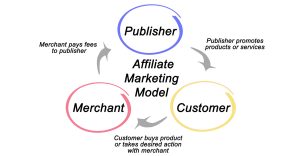
Share
3 Ways to Shape the Customer Experience for a Post-Pandemic World
If there’s one thing we’ve learned over the last year, it’s… Wait, who am I kidding? We’ve learned a ton. Over those months of lockdowns, there’s no end to the things we picked up. TikTok taught us how to make legendary tortilla wraps, we learned that NBA players need more time to rest between seasons, and we discovered that you’re sooner to find the gateway to Narnia than you are to find a PS5.
Paramount of them all, though? We learned that things can change in a heartbeat. And what have we had to do in response to that change? Adapt. In the case of the pandemic, we’ve changed the way we live, the way we work, the way we co-exist, and the way we shop and buy as consumers.
This year, EY Future Consumer Index found that 80% of consumers in the US are still changing the way they shop while 43% are shopping more often online for stuff that they could buy in stores. Thinking about that a little more, the past year has been a prime time for advertisers to reset the way they think about consumer needs and the future of eCommerce.
And what will it take to be successful as more changes happen with the slow emergence of a post-pandemic world? For starters, they can ruminate on what kind of consumer experience they should be offering. As the world begins to reopen, the experience is evolving from one that’s transactional to one that is fixed in ongoing and fulfilling relationships.
So, how can you adapt? It’s a good thing you asked, cause I’ve got a few ideas. Think of these as just a teaser to the countless possibilities for gearing up for the changes to come.
1. Prioritize a seamless and borderline effortless checkout
Checkout processes can immensely sway the likelihood of a shopper making a purchase or abandoning their carts. An overwhelming 88% of online shoppers say they’ve abandoned their carts, and a complicated checkout process is often a key reason for that.
Let this be a call-to-action for you to provide a fast and easy checkout experience. A few solid ways to do this are by reducing the fields customers have to fill in, including progress bars of the checkout process, and introducing a guest checkout option. While there are some benefits to going the long route with account registration, nobody likes being forced into it with no other alternatives.
2. Optimize the experience for mobile users
This one should come as no surprise, but people like to shop on their phones. We do almost everything on our phones from Yelping every restaurant in town to buying cryptocurrency, and buying items online is no exception. To adapt to this ongoing customer preference, prioritize mobile shopping. Opt for things like streamlined payment options, single-page checkout, and fast loading speeds.
All of those, and the tips in the link above, will make it more effortless for customers to complete their purchases without any unnecessary friction.
3. Go the final mile with delivery
Considering how used to two-day shipping consumers have gotten, consumers aren’t big on excuses. The Future Consumer Index I mentioned earlier reports that 21%—that’s one in five—of US consumers say they wouldn’t forgive brands for any service disruptions due to Covid-19. With everything opening up again, the pandemic is now no longer a viable excuse for not delivering packages reliably and on time. And why would it be? Order fulfillment has and will always be a big deal.
With one in twenty online orders never reaching their destination, consumers are wary of delivery. So, how can we ease their minds? By improving delivery success rates through the confirmation and verification of addresses. Another option, for those who can do it, is supporting curbside pickup. They may seem like small things, but it’ll all lead to a better customer experience in the end.
—————
With everything changing and the world slowly making a comeback, it’s a great time to think about evolution and adaptation. I hope that these tips help you in doing exactly that for your business! Even though change will continually be inevitable, we can always do our best to keep up.





